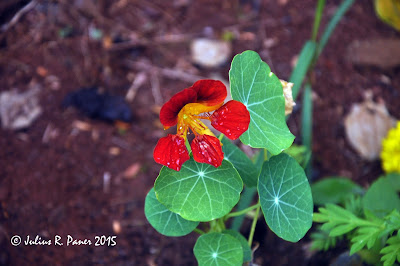Eight years ago, our
office had collaborated with the Department of Tourism to conceptualize a project
that would preserve the culture of the Bagobo-Tagabawa tribe in Sta. Cruz and
at the same time serve as a model cultural tourism destination in the entire
Mindanao island. We envisioned that the project would somehow become one of a
kind even in the country, where the community would take the overall leadership
in the implementation phase and that they will be capacitated to do everything
that they have especially in managing their rich cultural and natural
attributes.
As a prevailing tribal
group in the foothills of Mt. Apo, the Bagobo-Tagabawa of Tibolo and other
nearby areas willingly accepted the program and have reciprocated whatever
interventions we introduced. A certain Datu Ruben Ayoc, now a very good friend
of mine, allowed us to use a portion of his land belonging to the
Bagobo-Tagabawa Ancestral Domain for a project called Tibolo Cultural Village
(TCV). We had minimal trouble doing the early phase of the project particularly
on the community preparation phase but with the help of the Ayoc clan and other
government offices, we succeeded the initial push. To set the tone, we started
the program with the Padunggoe Sandawa, a gathering of all tribes in Mindanao
held in 2006 and the host tribe was the Tibolo Tagabawa Community. It was
indeed an exclamation point. A gun start that signalled the creation of the
tribal village we aspired for.
Now, a lot of
development interventions were already in place. We have received plenty of
grants from national government agencies like the Department of Agrarian
Reform, Department of Environment and Natural Resources, private sectors and
lately from DOT’s Tourism Infrastructure and Enterprise Zone Authority (TIEZA)
worth 10 million pesos for further site development. In an instance, Tibolo
became a destination favoured by those who love to learn the Tagabawa culture
and to commune with nature. And most of all, the program enabled the community
to manage a community-based, culture-focused intervention that eventually
improved the quality of life of the Tagabawa tribe residing within the territorial
jurisdiction of their ancestral domain.
The 2-hectare cultural
village today serves as a landmark of living indigenous cultural traditions, a
venue for cultural exchange, life-long learning and techno-share, a center for
culture-focused creative industry and trade, a learning site for conservation
of cultural and natural resources, an abode for indigenous tribal leaders and a
key stopover for mountain climbers and trekkers in Mt. Apo using the Sibulan
Trail.
My latest visit to the
TCV on July 23, 2015 was one of the worth visits I considered in my countless trips
to Tibolo. I accompanied a team from the Department of Tourism headed by
Regional Director Robby Alabado and staff Kai and Yetyet. Every time I visit
this place, there is always something special. Tibolo for me is a home away
from home. The people there I considered as a family already. With my frequent
visits to the village, there were indelible marks left, the most notable was in
2009 when I struggled to survive in an incident that was very traumatic.
With the new structures
erected by TIEZA, the village become even more captivating and colourful as it
was surrounded by assorted floral varieties cultivated by the women group of
the barangay. Director Alabado, being a bird watcher, had enough reasons to
stay longer because bird species there are in abundance also. The Tibolo Women
Association, a group we capacitated to handle enterprise activities, is still
very much blooming to offer us their soothing native coffee and other native
culinary including my favourites ludang, linotlot and chayote leaves salad.
While I roamed around
the cottages, the flowers were at their highly-saturated colors. The ecologic
activity was very obvious as insects freely took their time to kiss the elegant
petals all throughout the village. They were unmindful of us, they were just in
their usual state and we were left watching them as witnesses to their
playground. The early afternoon rain added so much drama to the already-vivid
environment. Very relaxing and mesmerizing.
In awe, RD Robby stayed
the village longer than expected. He loved the village as much as I do. After a
short conversation with the Tagabawa women, we left the place but with another
level of urge to really go back after a month or two. With the ongoing
rehabilitation and improvement of the road going to Tibolo from the DPWH-DOT
convergence program to improve several roads leading to tourist destinations
and with the effort to fix some flaws of the village’s accommodation
facilities, I am sure a lot of people can visit the Tibolo Cultural Village
later this year.
















No comments:
Post a Comment